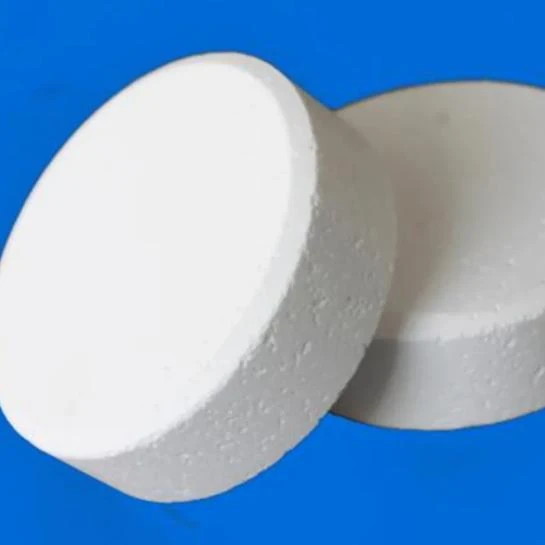
Exploring the Uses and Safety of E433 Food Additive in Modern Cuisine
Understanding E433 The Role of Food Additives in Modern Cuisine
In today's fast-paced world, food additives have become an integral part of our culinary experiences, enhancing not only flavor but also texture and shelf life. One such additive that warrants attention is E433, also known as Polyoxyethylene (20) sorbitan monooleate. Commonly referred to as Polysorbate 80, E433 serves multiple functions in the food industry, making it a quintessential element in various processed products.
What is E433?
E433 is a non-ionic surfactant derived from sorbitol, which is a sugar alcohol obtained from fruits and plants. This additive acts as an emulsifier, stabilizing mixtures that would otherwise separate, such as oil and water. It achieves this by reducing the surface tension between the ingredients, allowing for a smooth and consistent texture. Polysorbate 80 is typically found in a variety of food items, ranging from salad dressings and sauces to ice cream and baked goods.
Uses of E433 in Food Products
1. Emulsification The primary benefit of E433 is its ability to emulsify. In products like mayonnaise and salad dressings, it helps to maintain a homogenous mixture of oil and water. This prevents separation, ensuring that consumers enjoy a smooth texture and consistent flavor in each bite.
2. Texture Improvement In ice creams and dairy products, E433 improves the mouthfeel and creaminess. It contributes to the smoothness of the final product, allowing it to melt evenly and providing a luxurious texture that enhances the eating experience.
3. Stabilization E433 also functions as a stabilizer in various food items. It helps in maintaining the desired texture and appearance by preventing the formation of ice crystals in frozen desserts, thereby prolonging shelf life and ensuring that the quality remains consistent over time.
e433 food additive

4. Versatility Beyond food applications, E433 can be found in pharmaceutical products and cosmetics. Its widespread use highlights its versatility as a surfactant, making it a valuable ingredient across various industries.
Safety and Regulations
E433 is considered safe for consumption when used within established limits. Regulatory bodies such as the European Food Safety Authority (EFSA) and the U.S. Food and Drug Administration (FDA) have reviewed its safety profile and deemed it acceptable for use in food products. Nevertheless, as with many additives, there are individuals who may experience sensitivity or allergic reactions to certain emulsifiers, including E433. Therefore, it's important for consumers to be aware of the ingredients in their food, particularly those with dietary restrictions or allergies.
The Future of E433 in Our Diets
As the food industry evolves, so do the formulations of various products. With the growing trend towards clean-label ingredients and transparency in food production, consumers are becoming more cautious about what they put into their bodies. This shift may result in a reevaluation of additives like E433, as manufacturers seek to replace synthetic components with more natural alternatives. However, E433 will likely continue to play a role in food manufacturing due to its effectiveness as an emulsifier and stabilizer.
Conclusion
E433, or Polysorbate 80, is a vital food additive that enhances the quality and consistency of many products we consume daily. While it serves important functions in emulsification, texture improvement, and stabilization, it is essential for consumers to be informed about the additives present in their food. As we continue to navigate the landscape of modern cuisine, understanding additives like E433 can empower us to make better-informed choices about our dietary habits. Whether you view it as a necessary component of processed foods or as a candidate for replacement in favor of natural options, E433 undeniably plays a noteworthy role in our culinary world.
-
Pure Sodium Dichloroisocyanurate Dihydrate | Powerful DisinfectantNewsAug.29,2025
-
Industrial Chemicals: Quality & Purity for Every IndustryNewsAug.28,2025
-
Nitrile Rubber Honoring Strict Production StandardsNewsAug.22,2025
-
Aspartame Ingredients Honoring Food Safety ValuesNewsAug.22,2025
-
Fertilizer for Balanced Plant NutritionNewsAug.22,2025
-
Cyanide Gold Processing with High Purity AdditivesNewsAug.22,2025
-
Formic Acid in Textile Dyeing ApplicationsNewsAug.22,2025
Hebei Tenger Chemical Technology Co., Ltd. focuses on the chemical industry and is committed to the export service of chemical raw materials.
-

view more DiethanolisopropanolamineIn the ever-growing field of chemical solutions, diethanolisopropanolamine (DEIPA) stands out as a versatile and important compound. Due to its unique chemical structure and properties, DEIPA is of interest to various industries including construction, personal care, and agriculture. -

view more TriisopropanolamineTriisopropanolamine (TIPA) alkanol amine substance, is a kind of alcohol amine compound with amino and alcohol hydroxyl, and because of its molecules contains both amino and hydroxyl. -

view more Tetramethyl Thiuram DisulfideTetramethyl thiuram disulfide, also known as TMTD, is a white to light-yellow powder with a distinct sulfur-like odor. It is soluble in organic solvents such as benzene, acetone, and ethyl acetate, making it highly versatile for use in different formulations. TMTD is known for its excellent vulcanization acceleration properties, which makes it a key ingredient in the production of rubber products. Additionally, it acts as an effective fungicide and bactericide, making it valuable in agricultural applications. Its high purity and stability ensure consistent performance, making it a preferred choice for manufacturers across various industries.





